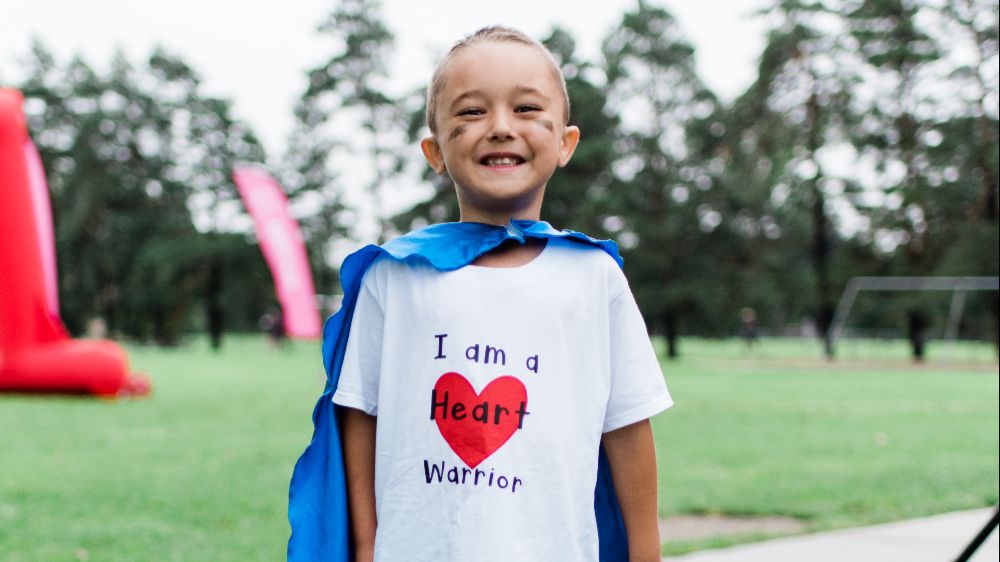What are congenital heart defects?
- Congenital heart defects (CHDs) are problems present at birth that affect the structure and function of the heart.
- Common examples include holes in the inside walls of the heart and narrowed or leaky valves. In more severe forms of CHDs, blood vessels or heart chambers may be missing, poorly formed, and/or in the wrong place.
- CHDs are the most common cause of infant death due to birth defects.
- 25% of babies born with a complex CHD will not see their 1st birthday.
- There are many types of congenital heart defects, ranging from those that pose relatively small threat to the health of the child to those that require immediate surgery. Many types of CHDs and the surgical procedures your physician may recommend to repair the condition can be found in The Children’s Heart Foundation’s parent resource book It’s My Heart.
- Some CHDs can be detected pre-birth by a Level II ultrasound or by a fetal echocardiogram. After birth, congenital heart disease is often first detected when the doctor hears an abnormal heart sound or heart murmur when listening to the heart. Depending on the type of murmur, he or she may order further testing such as – Echocardiogram, Cardiac catheterization, Chest X-Ray, Electrocardiogram (ECG/EKG), Magnetic Resonance Imaging (MRI) or other diagnostic testing.
- The warning signs of Congenital Heart Disease in infants and children may include a heart murmur or abnormal heart sound, cyanosis (a bluish tint to the skin, fingernails and/or lips), fast breathing, poor feeding, poor weight gain, an inability to exercise and excessive sweating.
How common are congenital heart defects?
- Congenital heart defects are the most common birth defect in the United States. Nearly one of every 110 babies is born with a CHD.
- Each year approximately 40,000 babies are born in the United States with a congenital heart defect. This equates to 1 child every 15 minutes.
- Approximately two to three million individuals are thought to be living in the United States with CHDs. Because there is no U.S. system to track CHDs beyond early childhood, more precise estimates are not available.
- For comparative purposes, cystic fibrosis occurs in 1 in 3,400 live births, autism is diagnosed in 1 in 59 children aged 8 years, and new diagnoses of cancer are made in 1 in 6,024 children and teens annually. Thus, the public health significance of CHDs in terms of numbers of people affected is much greater than or similar to that of disorders having higher levels of public awareness.
- In 2010, approximately 2.4 million individuals were estimated to be living with CHD in the United States, 1.4 million of whom were adults. Because there is no U.S. system to track CHDs beyond early childhood, precise counts are not available.
What causes congenital heart defects?
- Most causes of CHDs are unknown. Only 15-20% of all CHDs are related to known genetic conditions.
- Most CHDs are thought to be caused by a combination of genes and other risk factors, such as environmental exposures and maternal conditions. Because the heart is formed in early in pregnancy, the damage may occur before most women know they are pregnant.
- Environmental exposures that may be related to risk of having a CHD include the mother’s diet and certain chemicals and medications. Maternal diabetes is a recognized cause of CHDs. Maternal obesity, smoking, and some infections also may raise the risk of having a baby with a CHD. Addressing these factors before and during pregnancy may lower, but not eliminate, the risk of a fetus developing CHD.
- A baby’s risk of having a CHD is increased by 3 times if the mother, father, or sibling has a CHD.
What are the survival rates and health impact of congenital heart defects?
- Today, 95% of babies born with a non-critical CHD are expected to survive to at least 18 years of age.
- Critical CHD Survival Rates:
- Today: 69% of babies born with a critical CHD are expected to survive to 18 years of age.
- In contrast, between 1979 and 1993, about 67% of infants with critical CHDs survived to at least one year.
-
Approximately 25% of children born with a CHD will need heart surgery or other interventions in their first year of life to survive.
- People with CHDs face a life-long risk of health problems such as issues with growth and eating, developmental delays, difficulty with exercise, heart rhythm problems, heart failure, sudden cardiac arrest or stroke.
- Surgery is often not a cure for CHDs. Many individuals with CHDs require additional operation(s) and/or medications as adults.
-
Survival and medical care for babies with critical CHDs are improving. Survival to young adulthood is still lower for people with CHDs than the general population. The complexity of their defect, presence of other birth defects and birthweight might impact their survival to young adulthood. In addition, the race and ethnicity of their mother might have contributed to survival, which suggests that various factors at multiple levels might play a role, including access to care, systemic racism, and implicit bias. People with CHDs may benefit from more monitoring to identify and care for medical concerns earlier in life.
What are the long-term care needs and challenges of living with CHD?
People with congenital heart defects now live longer but face challenges that evolve over time. Beyond health and medical issues, many people living with CHDs face other challenges, especially as they transition into adulthood. A series of scientific statements recently published by the American Heart Association outlines several of these obstacles:
- Psychological Care
- People born with heart defects may experience psychological and social challenges from infancy through adulthood.
- Children with more complex CHDs are five times more likely to receive an anxiety diagnosis in their lifetime compared to children without CHD.
- For adults with CHD, the rate of experiencing a mood or anxiety disorder in their lifetime is about 50%, compared to about 30% for adults in the general population.
- People born with heart defects may experience psychological and social challenges from infancy through adulthood.
- Social Determinants of Health
- Disparities driven by social determinants of health limit access to the lifelong specialty care needed by people living with CHDs.
- Specialty care services are concentrated in urban areas, making access difficult for survivors in rural or smaller communities and those who may not have transportation or flexible work schedules.
- Certain communities may have limited programs for home monitoring and visitation as well as nutrition, growth and cognitive development (such as school-based outreach).
- Fewer than 500 board-certified specialists in adult congenital heart disease support the growing number of adults with CHD in the U.S., and they are primarily located in urban areas.
- Disparities driven by social determinants of health limit access to the lifelong specialty care needed by people living with CHDs.
- Transitioning to Adulthood
- Children with CHDs need special attention to successfully transition to adult-oriented health care.
- Young people living with CHDs may not seek care as they become adults until they are facing a health crisis.
- Extended time without routine care can have a significant impact on their long-term health and quality of life.
- A better understanding of transition needs and barriers is needed to minimize worsening health disparities for people with low socioeconomic status and those from historically under-resourced communities.
- Children with CHDs need special attention to successfully transition to adult-oriented health care.
What is the impact of CHD research?
- Because of advancements made through research, death rates from CHDs in the U.S. have declined by 37.5% since 1999.
- Today, more infants with CHDs survive to adulthood because of these advancements.
- Despite the progress made in understanding and treating CHDs, more work is needed to determine the causes and best treatment options.
- Congenital heart defects are common and can be deadly, yet CHD research is grossly under-funded relative to the prevalence of the disease.
- The NHLBI has stated that Congenital Heart Defects are a serious and under-appreciated global health problem.
What has The Children's Heart Foundation done to help the CHD community?
- The Children’s Heart Foundation is the leading national organization that was created to exclusively fund congenital heart defect research.
- The Children’s Heart Foundation has funded more than $16.5 million of CHD research and scientific collaborations.
- The Children's Heart Foundation has published and distributed 35,000 English and 3,000 Spanish copies of It’s My Heart, a patient and parent resource book.
- The Children's Heart Foundation partners with the American Heart Association to co-fund the Congenital Heart Defect Research Awards program. This program is a collaborative investment of funds by the two organizations for medical professionals to better understand and treat congenital heart defects.
Fact Sources:



